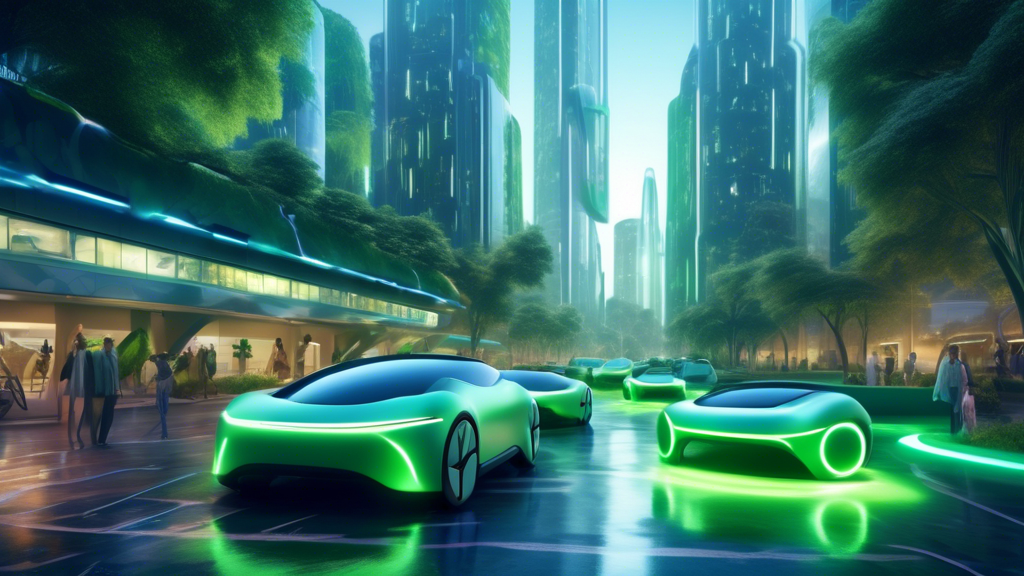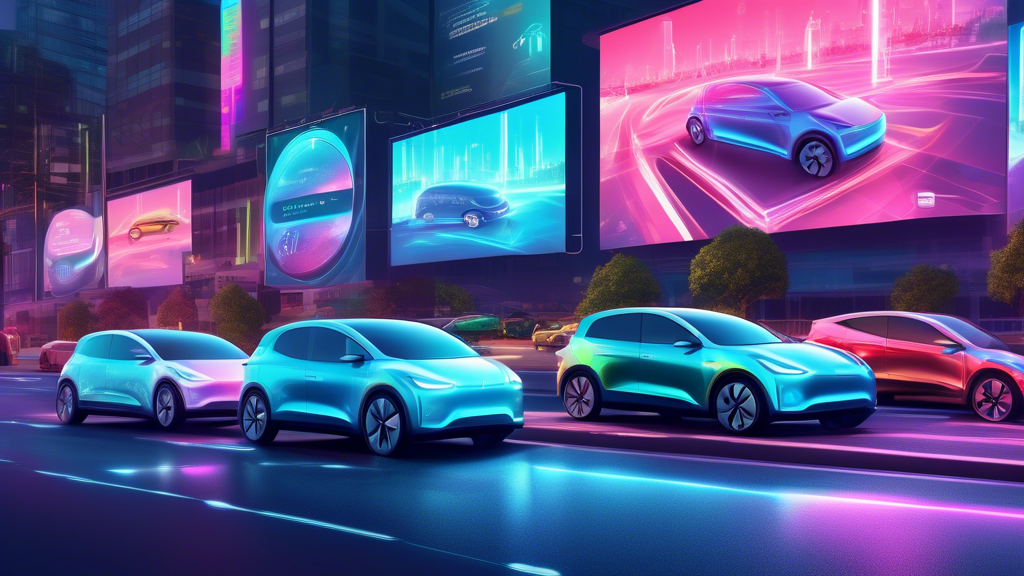Is the road ahead for electric vehicles as electrifying as it seems? As we steer into the future of EVs, a surge of innovation and change is transforming the automotive landscape. With cutting-edge advancements like improved battery efficiency and autonomous driving, the EV industry isn’t just evolving; it’s revolutionizing. Major players are in the fast lane, driving these trends and setting new standards for sustainability and mobility. Meanwhile, government incentives fuel this shift, propelling global growth and adoption of electric vehicles.
The economic ripple effects of moving away from gas-guzzling engines are significant. Job creation in tech and manufacturing sectors abounds, while potential environmental benefits include reducing our carbon footprints and decreasing dependence on fossil fuels. However, challenges remain. Infrastructure needs upgrading, and charging stations should keep pace with growing demand to avoid gridlocks in more than just traffic.
On the consumer front, preferences are shifting, and EVs are gaining traction. Yet, barriers like range anxiety and cost issues persist. The race among auto giants and startups isn’t just about building better cars; it’s about crafting compelling stories and offers that resonate with an increasingly eco-conscious audience. Are you ready to plug into this new era of motoring? The future of EVs holds promise and potential, but it also demands innovation and adaptation at every turn.
Trends and Innovations Shaping the Future of Electric Vehicles (EVs)
Have you ever wondered what powers the wheels of tomorrow? The exciting world of electric vehicles (EVs) is charged not just by electricity, but by groundbreaking innovations shaping its future.
Technological Advancements in the EV Industry
Technological advancements are the cornerstone of the EV industry’s rapid evolution. Battery efficiency, for instance, is accelerating faster than a Tesla on a freeway. New batteries promise longer range and quicker charging times. With solid-state batteries on the horizon, could this be the end for traditional lithium-ion?
Autonomous driving is another electrifying trend. Enhanced sensors and AI systems are revolutionizing how vehicles operate. Self-driving cars aren’t science fiction anymore; they’re a test drive away. Are you ready to nap during your commute?
Wireless charging solutions are also breaking into the scene. Imagine your EV charging seamlessly as you park over a pad at home or work. A world with fewer cords and more convenience—what’s not to like?
Key Industry Players and Their Contributions
Who’s steering this electric revolution? Major players like Tesla are clearly leading the charge, pushing boundaries with each new model. Their focus on battery tech and autopilot systems keeps them ahead of the curve.
Legacy automakers, like Ford and General Motors, are reinventing themselves with bold EV lineups. Their investments in electric technology and infrastructure signal a significant shift in the automotive world.
Meanwhile, newcomers such as Rivian and Lucid Motors are making waves. These startups bring fresh perspectives and innovative designs to the table, challenging the status quo. Could these underdogs become industry top dogs?
Government Regulations and Incentives
The role of government in shaping the EV landscape can’t be underestimated. Regulations aimed at reducing emissions are accelerating the shift to electric. In countries like Norway, policy support has turbocharged EV adoption, making up over 70% of new car sales there. Can others catch up?
Incentives are the carrots luring consumers to make the switch. Governments worldwide are offering tax rebates and subsidies to encourage EV adoption. These financial incentives reduce the initial cost barrier, making EVs accessible to a broader audience.
Infrastructure development support plays a big role, too. Grants for charging station projects are speeding up their availability and fueling demand growth. Is your community preparing for the electric future?

Economic and Environmental Impacts of Widespread EV Adoption
Are electric vehicles driving us to a greener and more economically vibrant future? When considering EV adoption, it’s clear they are not just cars, but catalysts for change. Let’s delve into how these changes ripple through the economy and environment.
Economic Influence: Engines of Change
Electric vehicles represent more than a shift in technology; they herald a new era of economic transformation. As traditional combustion engines transition to EVs, job opportunities within diverse sectors are poised to emerge. From battery manufacturing to software development for autonomous driving, the potential for job creation appears boundless.
Moreover, regions that embrace EV technology could experience an economic renaissance. By establishing themselves as leaders in EV production and innovation, these areas can attract businesses and investments. This shift could redefine industrial landscapes, positioning them as global centers for cutting-edge automotive advancements.
Environmental Benefits: Clearing the Air
Electric vehicles, dubbed the knights in shining armor for our environment, promise significant benefits. They are instrumental in reducing greenhouse gas emissions. By decreasing our reliance on fossil fuels, EVs offer a cleaner alternative to traditional vehicles, hence promoting better air quality.
But do EVs live up to the green hype? Consider urban centers plagued by smog and pollution. Widespread EV adoption could pave the way for cleaner, healthier cities. This transformation isn’t merely pie-in-the-sky; it’s a tangible benefit that puts everyone’s lungs a little more at ease.
Infrastructure Challenges and Opportunities
What’s the downside of this electrifying shift? Infrastructure development challenges arise, namely charging station availability and grid capacity. As EV adoption accelerates, there’s an urgent need to expand and improve our electricity grid to meet increased demands.
Yet, therein lies an opportunity. Developing robust EV infrastructure can foster innovation. From solar-powered charging stations to smart grids, infrastructure improvements can enhance energy efficiency and sustainability. This evolution demands imagination, but offers significant returns.
What does the future hold for EV infrastructure? Consider overcoming range anxiety, a common concern among prospective EV owners. Increasing charging stations not only alleviates these fears but also encourages further EV proliferation, creating a cycle of growth and adoption.
Finally, let’s not overlook the potential for collaboration between public and private entities. As governments invest in EV infrastructure, businesses can also contribute by integrating charging solutions into commercial properties. Together, they can create an ecosystem that rewards and supports widespread adoption.
In conclusion, the journey toward widespread EV adoption impacts more than just our roads. It shapes our economy and remolds our environmental practices. By embracing these changes and addressing challenges head-on, electric vehicles can drive us toward a sustainable future.

Are electric vehicles (EVs) really taking over consumer preferences, or is it just a passing trend? In an automotive landscape swiftly shifting towards sustainability, understanding consumer behavior is vital. EVs, once a novelty, are now serious contenders in the automotive market, driven by changes in consumer preferences and behaviors.
Factors Driving Increased EV Sales
Why are more consumers considering EVs? Environmental consciousness ranks high among reasons. Consumers increasingly prioritize sustainability, reflecting in their vehicle choices. Is it any wonder sales are rising? Lower running costs also entice buyers. Unlike gasoline-powered cars, EVs offer minimal maintenance and tax breaks, making them financially attractive. Then there’s the allure of cutting-edge technology. With features like advanced infotainment systems and autonomous driving capabilities, EVs appeal to tech-savvy consumers.
Barriers to Broader Adoption
Despite increasing interest, some obstacles remain. What’s holding consumers back? Range anxiety tops the list. Concerns about battery life and charging infrastructure deter potential buyers. Consumers worried about long-distance travel hesitate to make the switch. Initial cost is another hurdle. Although costs have dropped, EVs still often carry a higher price tag compared to traditional vehicles. Financial considerations can outweigh environmental benefits for many consumers.
How can we overcome these challenges? Expanding charging networks and developing faster, more efficient batteries can ease range anxiety. Financial incentives, like tax rebates and lower interest loans, may also mitigate cost concerns. Education plays a crucial role, too. By informing consumers about long-term savings, more may be persuaded to take the plunge.
Competitive Landscape and Market Dynamics
How are different players shaping the EV market? The competition is fierce. Traditional automakers and new startups battle for dominance, each bringing unique strengths. Established manufacturers leverage their production experience and brand loyalty. They’ve invested heavily in electrification, demonstrating commitment through diverse product lines.
Startups, meanwhile, drive innovation. Companies like Tesla have shown how disruption can create market leaders. They’re not burdened by legacy systems, allowing for agility and rapid technological advancements. But is it enough? Marketing strategies play a crucial role in their success. Traditional players focus on brand heritage, which appeals to conservative consumers. In contrast, startups highlight innovation and eco-friendliness, resonating with younger, environmentally-conscious buyers.
To survive and thrive, companies must continuously innovate and understand evolving consumer needs. The road ahead will require adaptability to a market where customer expectations are continually evolving. By addressing consumer concerns and effectively leveraging competitive advantages, they can accelerate the transition to a more sustainable automotive future.
Are electric vehicles poised to be more than just a passing trend? The evidence suggests a resounding yes. From cutting-edge battery innovations to autonomous driving, the EV industry is racing forward with groundbreaking advancements. Industry giants aren’t alone; startups are charging ahead, pushing the boundaries of what’s possible.
Government support adds fuel to this electric revolution, with incentives accelerating global EV adoption. As traditional combustion engines make way for their electric counterparts, economies will witness significant shifts. Job markets will transform, creating opportunities in manufacturing, tech, and beyond. Environmentally, the potential for reduced emissions and decreased fossil fuel reliance is a beacon of hope in an era of climate awareness.
However, wide-scale EV adoption isn’t without its challenges. Infrastructure developments are crucial, as is the expansion of charging networks and grid capacity. Consumers, now more environmentally conscious than ever, are reshaping market dynamics. Yet, barriers like range anxiety and high initial costs need addressing. Solving these issues will unlock the full potential of the EV market.
In a competitive landscape, automakers, both old and new, must strategize astutely. Innovation in product offerings coupled with smart marketing will determine who leads the charge. The race is on, but as the wheels turn, the road ahead seems promising. Are we witnessing the dawn of a new era in transport? Only time will tell, but it surely appears so.
